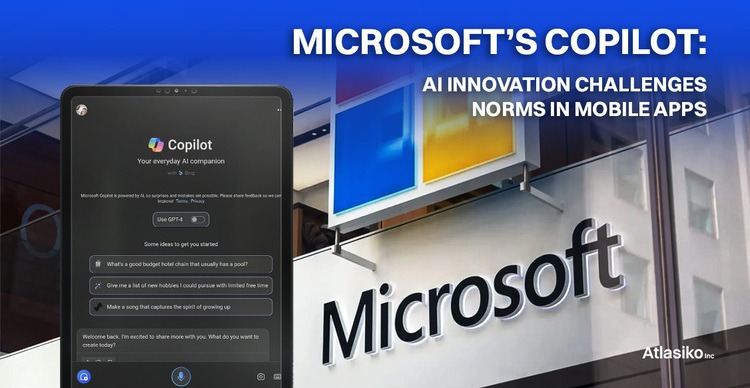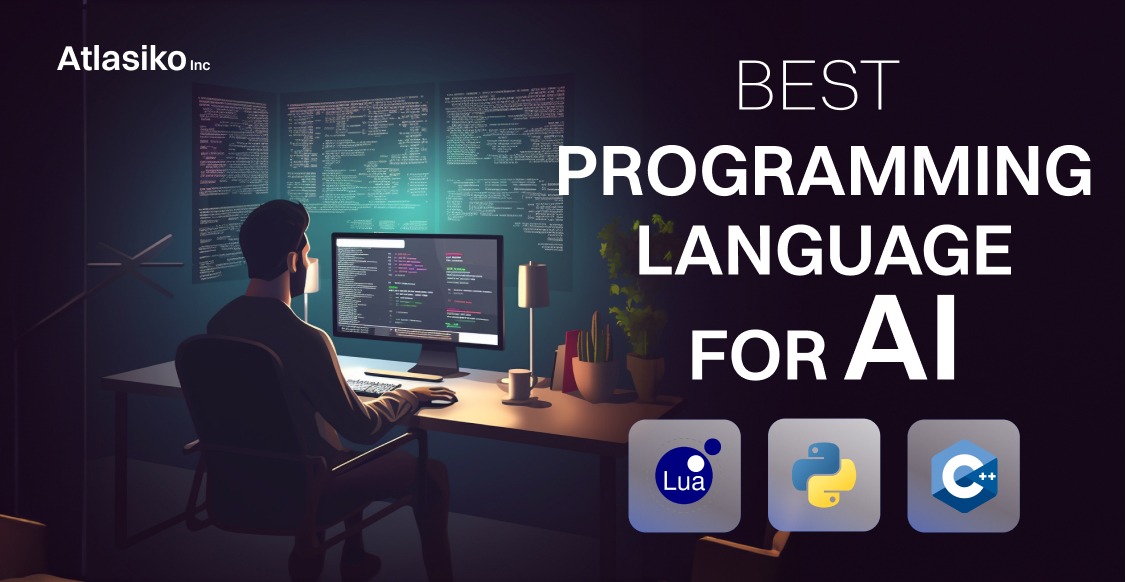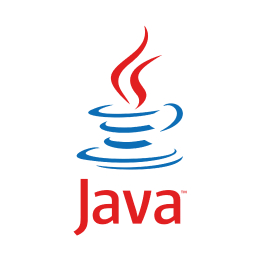In recent years, especially after last year’s ChatGPT chatbot breakthrough, AI creation secured a pivotal position in overall global tech development. Such a change in the industry has created an ever-increasing demand for qualified AI programmers with excellent skills in required AI languages. Undoubtedly, the knowledge of top programming languages for AI brings developers many job opportunities and opens new routes for professional growth.
Continuing our AI series, we’ve compiled a list of top programming languages for artificial intelligence development with characteristics and code and implementation examples. Read ahead to find out more about the best programming languages for AI, both time-tested and brand-new.
11 Top AI programming languages
Artificial intelligence consists of a few major subfields such as cognitive computing, computer vision, machine learning (ML), neural networks, deep learning (DL), and natural language processing (NLP). We’ve already explored programming languages for ML in our previous article. It covers a lot of processes essential for AI, so you just have to check it out for an all-encompassing understanding and a more extensive list of top languages used in AI development.
| Name | Typing system | Paradigm | Frameworks and Libraries for AI | Main features |
|---|---|---|---|---|
| Python | Dynamic, strong | Multi-paradigm | NumPy, PyTorch, SciPy, Scikit-Learn, Pandas, Keras, TensorFlow, Plotly, Matplotlib, Theano, MXNet | - Interpreted language; Has a large standard library; Supports exception handling; Automatic memory management support; Built-in functions for better performance |
| Java | Static, strong | Multi-paradigm | Apache Jena, PowerLoom, d3web, Tweety, Neuroph, Apache OpenNLP, Jenetics, Watchmaker Frameworks | Provides great range of libraries and tools Great performance; Handles large datasets; Support for concurrent programming; Concise and easy to read code |
| Lisp | Dynamic, strong | Multi-paradigm | antik, mgl-mat, LLA, sparser, cl-nlp, babel2 | Convenient macrosystem; High-level debugging; Wide range of data types support; Complete I/O library; Extensive control structures |
| C++ | Strong, static | Multi-paradigm | OpenCV, NLTK, roscpp, Boost, Armadillo | Templates for generic code with different data types; Extensive standard library; Supports exception handling; Simultaneous code execution on multithreads; Reusable code |
| Rust | Static, strong | Multi-paradigm | TensorFlow/rust, neuroflow, linfa, burn, smartcore, rustlearn, piston-ai_behavior, openai-rust | Ensured memory safety; Pattern matching; Zero-cost abstractions; Move semantics; Manual memory management |
| R | Dynamic, weak | Multi-paradigm | C50, kernlab, Neuralnet, Caret, dplyr | Supports vectr operations; Sufficient number of libraries for AI/ML; Fast performance; Handles large datasets; Easy to learn |
| Mojo | Static, strong | Procedural, object-oriented | NumPy, Matplotlib, other Python resources | Zero-cost abstractions; Language integrated autotuning; Progressive types; Memory safety; Parallel heterogenous runtime |
| Prolog | Untyped | Logic, declarative | SWI-Prolog library, zamia-ai, mlu, cplint, cplint-datasets, clpfd and logtalk packages | Built-in data structures; Pattern matching; Built-in functions for NLP; Enables building expert systems; Backtracking |
| Haskell | Static | Purely functional | HLearn, grenade, hasktorch, smarties, HFNN, hmatrix | Powerful type system; Supports running algorithms on multiple cores; Lazy programming language; High-level seurity |
| Smalltalk | Object, in some implementations strong, dynamic | Object-oriented | PolyMath, nlp_smalltalk, NeoCSV, pharo.ai | JIT compilation; Advanced debugging Image-based; Purely OOP |
| Lua | Dynamic, weak | Multi-paradigm | Torch7, fairseq-lua, SciLua, lua-ai | Fast interpreted scripting language; Embedded language within host applications; Small size Built-in support of text processing; Stack-based virtual machine |
Best programming languages for artificial intelligence in 2023
Python
Code example
print('Hello World!')
The best programming language for artificial intelligence is commonly thought to be Python. It is widely used by AI engineers because of its straightforward syntax and adaptability. It is simpler than C++ and Java and supports procedural, functional, and object-oriented programming paradigms. Python also gives programmers an advantage thanks to it being a cross-platform language that can be used with Linux, Windows, macOS, and UNIX OS. It is well-suited for developing AI thanks to its extensive resources and a great number of libraries such as Keras, MXNet, TensorFlow, PyTorch, NumPy, Scikit-Learn, and others.
In the previous article about languages that you can find in our blog, we’ve already described the use of Python for ML, however, its capabilities don’t end in this subfield of AI. Additionally, the AI language offers improved text processing capabilities, scripting with modular designs, and simple syntax that works well for NPL and AI algorithms. It also enables algorithm testing without the need to actually use the algorithms. The qualities that distinguish Python from other programming languages are interactivity, interpretability, modularity, dynamic typing, portability, and high-level programming.
Answering the question “Why is Python used for AI?”, we can note that it is short, simple, and basic, making it simple to learn and master. Many programmers also choose to learn Python as it’s fundamental for the industry and is required for finding a job. It also offers a thriving support system thanks to its sizable user community that produces more and more resources, and shares experience.
Among the most popular Python AI projects we can see fake review detectors (used by review sites like Google My Business, Yelp, Gripeo, and others), handwriting recognizers, spoiler blockers, traffic analyzers, and many other implementations.
| Pros | Cons |
|---|---|
| Extensive Python resources in the form of libraries, frameworks, packages, etc. | Runtime-error prone, needs more time for testing |
| Readability due to simple code with straightforward syntax | More complicated and layered dataset access |
| Easy to learn for beginners | |
| Support from the community, tutorials, and guides available | |
| OS Platform independence |
Java
Code example
public class Hello {
public static void main(String[] args) {
System.out.println("Hello World!");
}
}
Developers often use Java for AI applications because of its favorable features as a high-level programming language. The object-oriented nature of Java, which follows the programming principles of encapsulation, inheritance, and polymorphism, makes the creation of AI algorithms simpler. This top AI programming language is ideal for developing different artificial intelligence apps since it is platform-independent and can operate on any platform. Java's robust characteristics can be utilized to create sophisticated AI algorithms that can process data, make choices, and carry out other functions.
Java AI is a fantastic choice for development because of its popularity for being both flexible and user-friendly. Java programmers can produce code rapidly and effectively, freeing them up to concentrate on AI methods and models.
Fast runtimes and swifter execution are crucial features when building AI granted to Java users by the distinguishing characteristics of this best AI language. Additionally, it offers amazing production value and smooth integration of important analytical frameworks. Java's Virtual Machine (JVM) Technology makes it easy to implement it across several platforms.
From robotic assistants to self-driving automobiles, Java is employed in numerous AI applications, apart from being used for machine learning. Big data applications like facial recognition systems are also powered by AI in Java. The language is also used to build intelligent chatbots that can converse with consumers in a human-like way.
| Pros | Cons |
|---|---|
| Java is well-known for its scalability | Longer code and more complicated syntax in comparison with Python |
| OS Platform independence without the need for recompilation thanks to the JVM | Less user-friendly for learning |
| Exceeds Python in terms of speed | |
| Java doesn’t require indentation |
Lisp
Code example
(format t "Hello, World!")
Lisp was at the origins of not just artificial intelligence but programming in general as it is the second-oldest high-level programming language that first time appeared all the way back in the 1950s. Since its inception, Lisp has influenced many other best languages for AI and undergone significant evolution itself, producing various dialects throughout its history. The two general-purpose Lisp dialects that are currently most well-known and still utilized are Common Lisp (used in AI the most) and Scheme.
Lisp's fundamental building blocks are symbols, symbolic expressions, and computing with them. Therefore, Common Lisp (and other Lisp dialects) are excellent for symbolic AI. This language is frequently used for well-known AI apps in such fields of symbolic computation as computer algebra, theorem proving, planning systems, knowledge representation and reasoning, logic languages, machine translation, expert systems, and other typical AI domains.
| Pros | Cons |
|---|---|
| Good programming environment (editors, debuggers, compilers) | Lack of resources as most libraries are written in Python, C++, or C |
| The use of Read-Eval-Print Loop to simplify interactive programming | Require special configurations for hardware and software |
| Capabilities of Great symbolic information processing | |
| Robust macro machinery |
C++
Code example
// Online C++ compiler to run C++ program online
#include <iostream>
int main() {
// Write C++ code here
std::cout << "Hello world!";
return 0;
}
The field of AI systems creation has made great use of the robust and effective programming language C++. Using algorithms, models, and data structures, C++ AI enables machines to carry out activities that ordinarily call for general intelligence. Besides machine learning, AI can be implemented in C++ in a variety of ways, from straightforward NLP models to intricate artificial neural networks.
Projects involving image and video processing, like object recognition, face detection, and image segmentation, can also employ C++ language for AI. A variety of computer vision techniques are available in C++ libraries like OpenCV, which is often a part of AI projects.
AI initiatives involving natural language processing e.g. text classification, sentiment analysis, and machine translation, can also utilize C++ as one of the best artificial intelligence languages. NLP algorithms are provided by C++ libraries like NLTK, which can be used in AI projects.
Due to its efficiency and capacity for real-time data processing, C++ is a strong choice for AI applications pertaining to robotics and automation. Numerous methods are available for controlling robots and automating jobs in robotics libraries like roscpp (C++ implementation of ROS).
The creation of intelligent gaming agents and NPCs is one example of an AI project that can employ C++ thanks to game development tools like Unity.
| Pros | Cons |
|---|---|
| A wide range of libraries and frameworks | Complex syntax |
| Real-time processing of large amounts of data increases performance | C++ AI might have security issues |
| Sufficient community support | The language isn’t considered memory-efficient |
| Control over low-level processes |
Rust
Code example
fn main() {
println!("Hello, world!");
}
Rust is a multi-paradigm, high-level general-purpose programming language that is syntactically comparable to another best coding language for AI, C++. It was first created by Graydon Hoare at Mozilla Research in 2006. Now, because of its speed, expressiveness, and memory safety, Rust grows its community and becomes more widely used in artificial intelligence and scientific computation.
As a programming language for AI, Rust isn’t as popular as those mentioned above. Therefore, you can’t expect the Python-level of the resources volume. Nevertheless, this artificial intelligence programming language still offers libraries and frameworks for such significant AI subfields as neural networks, machine and deep learning, NLP, scientific computing, and more.
Large systems and companies are using Rust programming language for artificial intelligence more frequently. It is employed by organizations including Google, Firefox, Dropbox, npm, Azure, and Discord.
| Pros | Cons |
|---|---|
| High focus on memory safety | Rust doesn’t offer a garbage collection feature |
| High-level code can be compiled into low-level code machines without performance downgrading | Less developed Rust AI ecosystem |
| Reusable and composable code |
R Language
Code example
> myString <- "Hello, World!"
> print ( myString)
[1] "Hello, World!"
R is a top open-source language used for AI created in 1993. R was created specifically for data analysis, software application development, and the creation of data mining tools, in contrast to Python. R contains a number of tools for statistical computation, data gathering, and visualization in addition to a wide range of data models and advanced tools for data analysis that are essential for building functioning AI models.
R is used in so many different ways that it cannot be restricted to just one task. Programmers utilize the capabilities of this best language for AI development to cover operations for not just machine and deep learning, where R comes in handy the most, but also natural language processing, neural networks, and data science.
You can create unique AI applications ready for deployment rather quickly if you learn to construct and use R-based AI models, which could be apps for predictive modeling, deep learning, extracting important information from texts, and more.
| Pros | Cons |
|---|---|
| Enabled processing of big data for ML/DL | R is considered to be a slow language that consumes a lot of memory |
| A sufficient number of R packages from the R repository simplify the development of ML and neural network models for AI | R might be complicated for beginners to learn as it requires at least intermediate knowledge of mathematical functions, probability, and statistics |
| R is platform-independent | |
| Support from a growing community in the form of extended resources, tutorials, and guides |
Mojo
Code example
use Mojo::HelloWorld;
my $hello = Mojo::HelloWorld->new;
$hello->start;
Mojo is a this-year novelty created specifically for AI developers to give them the most efficient means to build artificial intelligence. This best programming language for AI was made available earlier this year in May by a well-known startup Modular AI.
Mojo was developed based on Python as its superset but with enhanced features of low-level systems. The main purpose of this best AI programming language is to get around Python's restrictions and issues as well as improve performance.
With Python's usability and C's performance, Mojo combines the features of both languages to provide more capabilities for AI. For example, Python cannot be utilized for heavy workloads or edge devices due to its lower scalability while other languages, like C++, have the scalability feature. Therefore, till now both languages had to be used in combination for the seamless implementation of AI in the production environment. Now Mojo can replace both languages for AI in such situations as it is designed specifically to solve issues like that.
As Python’s superset, Mojo makes it simple to seamlessly integrate different libraries like NumPy, matplotlib, and programmers' own code into the Python ecosystem. Users can also create Python-based programs that can be optimized for low-level AI hardware without the requirement for C++ while still delivering C languages’ performance.
Because Mojo can directly access AI computer hardware and perform parallel processing across multiple cores, it does computations faster than Python. Mojo natively controls AI hardware, including low-level hardware operations like accessing threads, TensorCores, and AMX extensions, thanks to Modular's high-performance Runtime and full use of Multi-Level Intermediate Representation technology.
| Pros | Cons |
|---|---|
| Fully compatible with Python’s ecosystem | Mojo is still in the development stage |
| Advantages of low-level performance | Minimal community as the language isn’t widely used just yet |
| Deployment of code subsets to accelerators | |
| Support of zero-cost abstractions | |
| Rust-level Memory safety |
Prolog
Code example
?- write('Hello World!'), nl.
Hello World!
true.
?-
Prolog is a logic programming language used for AI. It’s primarily designed to be a declarative programming language, which gives Prolog a set of advantages, in contrast to many other programming languages. Prolog uses relations ( Facts and Rules) to express logic. A query over these relations is used to perform formulation or computation.
For symbolic reasoning, databases, language parsing applications, chatbots, voice assistants, graphical user interfaces, and natural language processing, it is employed in academic and research settings. The list of AI-based applications that can be built with Prolog includes automated planning, type systems, theorem proving, diagnostic tools, and expert systems. It is utilized by IBM Watson and a few NLP programs.
| Pros | Cons |
|---|---|
| Efficient in backtracking and data structuring | It falls behind Lisp in terms of I/O features |
| Better suited for rapid prototyping | Generally Prolog doesn’t supports graphics |
| Prolog has an inbuilt list handling feature |
Haskell
Code example
/ HelloWorld.hs
main :: IO ()
main = putStrLn "Hello World"
The programming language Haskell is becoming more and more well-liked in the AI community due to its capacity to manage massive development tasks. Haskell is a great option for creating sophisticated AI algorithms because of its type system and support for parallelism. Haskell's laziness can also aid to simplify code and boost efficiency. Haskell is a robust, statically typing programming language that supports embedded domain-specific languages necessary for AI research.
Haskell and other functional languages, like Python, use less code while keeping consistency, which boosts productivity and makes maintenance easier.
From our previous article, you already know that, in the AI realm, Haskell is mainly used for writing ML algorithms but its capabilities don’t end there. This top AI coding language also is great in symbolic reasoning within AI research because of its pattern-matching feature and algebraic data type. Now when researchers look for ways to combine new machine learning approaches with older symbolic programming for improved outcomes, Haskell becomes more popular.
Haskell can also be used for building neural networks although programmers admit there are some pros & cons to that. Haskell for neural networks is good because of its mathematical reasoning but implementing it will be rather slow.
| Pros | Cons |
|---|---|
| Advanced features (type classes, pattern matching, list comprehension, Lambda expressions) | Haskell might be hard to learn |
| Reusable code | It has limited support and is under-discovered across industries |
| Memory management efficiency | |
| Instructional language good for teaching |
Smalltalk
Code example
Transcript cr; show: 'Hello World!'
Smalltalk is a general-purpose object-oriented programming language, which means that it lacks the primitives and control structures found in procedural languages. It was created in the early 1970s and was first released as Smalltalk-80, eventually changing its name to Smalltalk.
In Smalltalk, only objects can communicate with one another by message passing, and it has applications in almost all fields and domains. Now, Smalltalk is often used in the form of its modern implementation Pharo.
In the field of artificial intelligence, this top AI language is frequently utilized for creating simulations, building neural networks as well as machine learning and generic algorithms.
| Pros | Cons |
|---|---|
| Smalltalk is considered user-friendly and easy to learn | Smaller user community in comparison with other AI programming languages |
| Smalltalk is considered user-friendly and easy to learn | Limited resources and libraries |
| Simple and minimalistic syntax |
Lua
Code example
print("Hello World")
Compared to other best languages for AI mentioned above, Lua isn’t as popular and widely used. However, in the sector of artificial intelligence development, it serves a specific purpose. It is a powerful, effective, portable scripting language that is commonly appreciated for being highly embeddable which is why it is often used in industrial AI-powered applications. Lua can run cross-platform and supports different programming paradigms including procedural, object-oriented, functional, data-driven, and data description.
In this best language for artificial intelligence, sophisticated data description techniques based on associative arrays and extendable semantics are combined with straightforward procedural syntax. Lua is perfect for configuration, scripting, and rapid prototyping because it features dynamic typing, operates by interpreting bytecode using a register-based virtual machine, and has automatic memory management with incremental garbage collection.
| Pros | Cons |
|---|---|
| This best language for AI has simple procedural syntax combined with strong data description constructs. | Limited libraries, resources, and community support |
| Lua is faster than Python because of its lightweight nature | Lua is rarely used as a standalone language, usually you need to combine it with others to create robust AI |
| Because of simple syntax, Lua is thought to be easy to learn |
Programming languages for AI FAQ
What is the most common language used for writing artificial intelligence (AI) models?
Undoubtedly, the first place among the most widely used programming languages in AI development is taken by Python. In this particular tech segment, it has undeniable advantages over others and offers the most enticing characteristics for AI developers. Statistics prove that Python is widely used for AI and ML and constantly rapidly gains supporters as the overall number of Python developers in the world exceeded 8 million.
What is the best programming language for artificial intelligence?
When it comes to the artificial intelligence industry, the number one option is considered to be Python. Although in our list we presented many variants of the best AI programming languages, we can’t deny that Python is a requirement in most cases for AI development projects. Moreover, it takes such a high position being named the best programming language for AI for understandable reasons. It offers the most resources and numerous extensive libraries for AI and its subfields. Python's pre-defined packages cut down on the amount of coding required. Also, it is easy to learn and understand for everyone thanks to its simple syntax. Python is appreciated for being cross-platform since all of the popular operating systems, including Windows, macOS, and Linux, support it. Because of these, many programmers consider Python ideal both for those new to AI and ML and seasoned experts.
Conclusion
We hope this article helped you to find out more about the best programming languages for AI development and revealed more options to choose from. Especially now when the creation of artificial intelligence is among the world’s biggest tech tendencies and the demand for AI professionals is high, the knowledge of efficient Ai coding languages is crucial for programmers.
In our blog, you can find more insights and useful information about the artificial intelligence niche, so don’t hesitate to subscribe to be up-to-date with the development of this industry.



















mojo is a rather interesting project but i don't think it'll surpass python. at least not anytime soon
Thank you for your comment! You're right, it's interesting to see how the Mojo project will develop in the future, taking into account the big plans of its developers. They sure will need some time to work up the resources and community as massive as Python has.